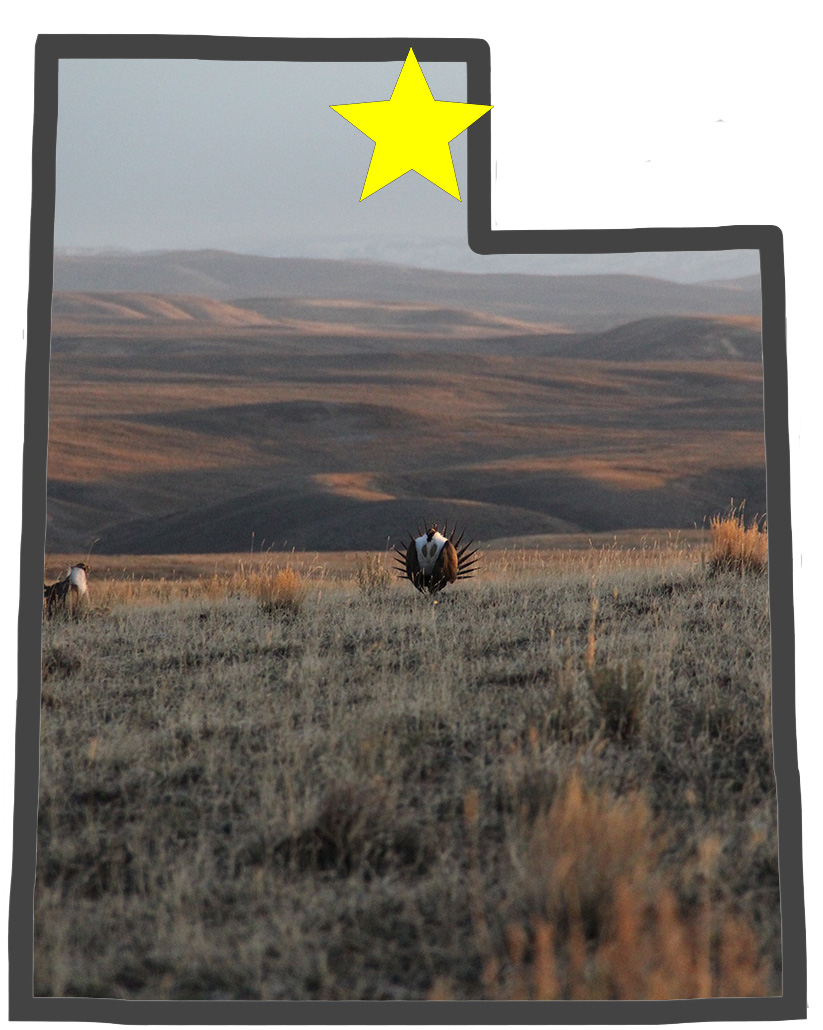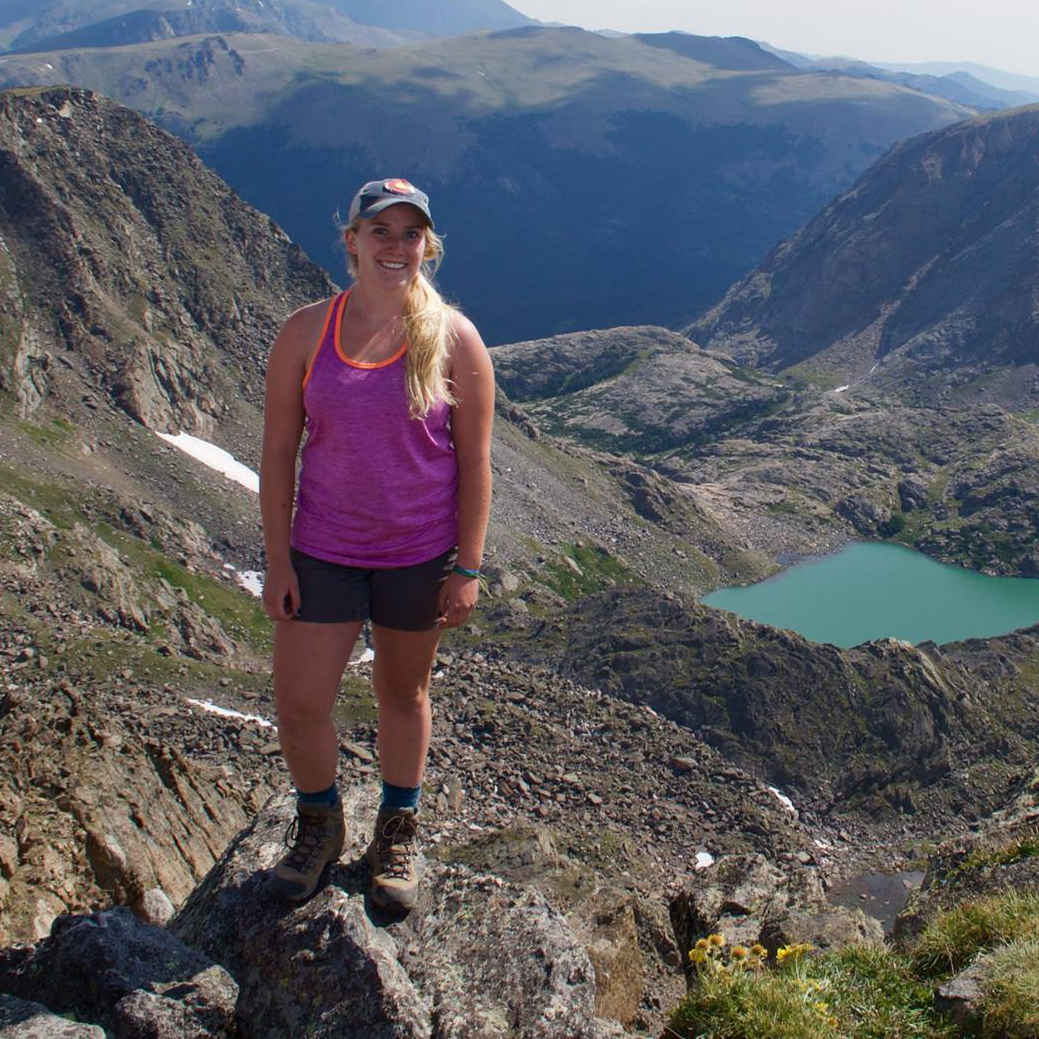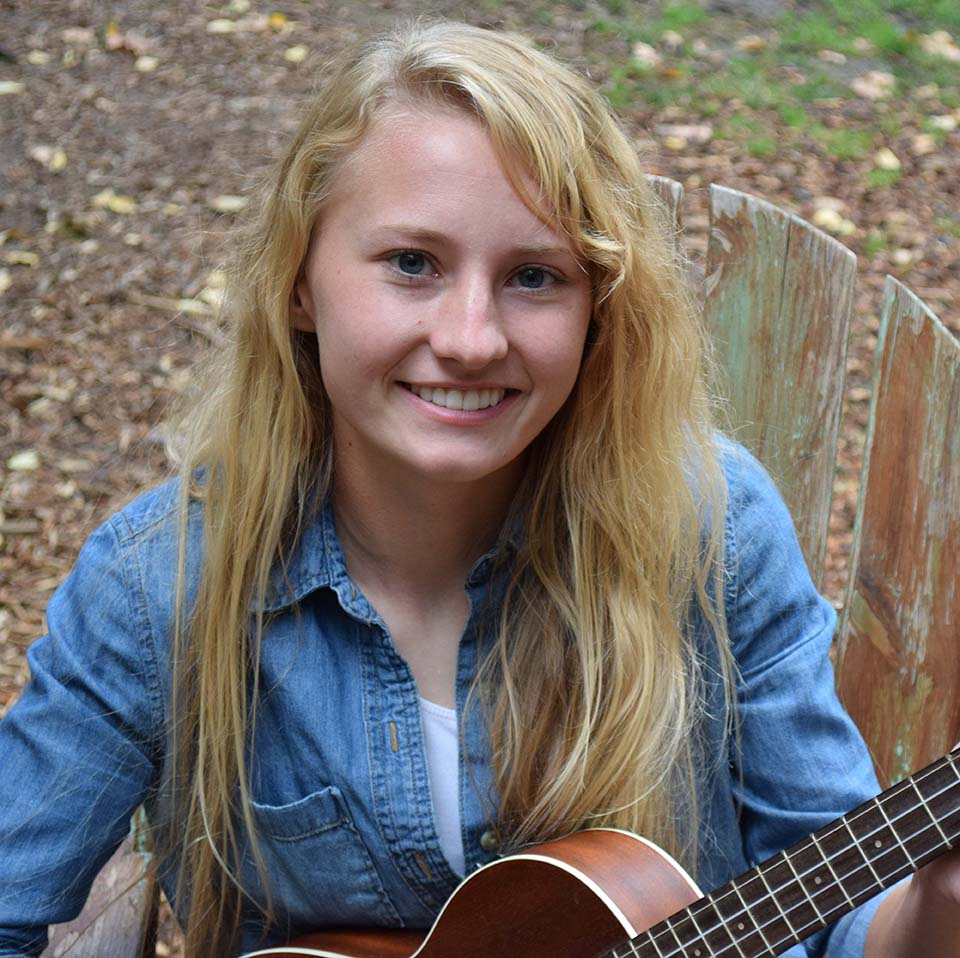Rich County CRM
Meetings
Meetings are usually held at the Randolph Senior Center (21 N Main St., Randolph). Contact Dave Dahlgren for more details.
For more information contact Dave Dahlgren at dave.dahlgren@usu.edu.
Field Reports
- June 2022 Annual Field Report
- 2022 Annual Field Report
- 2021 Annual Field Report
- Field Reports for 2021: Jan-April, May, June, Final

Rich County CRM Systems Manual
Rich County Sage-grouse Conservation Plan
A note about the Rich County sage-grouse plan: This is an adaptive plan, it will be reviewed annually andOutline of Utah with sagebrush photo inset and star showing Rich County CRM area therefore is likely to be amended, changed, updated, and reported upon but it will not be ignored and just put on the shelf as a monumental accomplishment of those involved.
Reports and Publications
-
Rich County Sage-Grouse Field Report – June 2022 Codi Backen, Graduate Research Assistant (codibacken16@gmail.com; 402-305-6402) and Terry Messmer (terry.messmer@usu.edu; 435-797-3975) Utah State University.
- Backen, C., and T.A. Messmer. 2021. Greater Sage-grouse Responses to Livestock Grazing in Semi-Arid Sagebrush Rangelands. Annual Report. Utah State University, and the Jack H. Berryman Institute, Logan UT.
- 2020 Accomplishment Report of Utah’s Adaptive Resources Management Greater Sage-grouse Local Working Groups 2019 Accomplishement Report, Rich County CRM section or entire LWG report
- Wayment, H., and T.A. Messmer. 2019. Greater sage-grouse responses to livestock grazing in semi-arid sagebrush rangelands. Annual Report. Utah State University, and the Jack H. Berryman Institute, Logan UT.
- Dettenmaier, Seth J. 2018. Effects of Livestock Grazing Management Practices on Greater Sage-grouse Nest and Female Survival. Ph. D. Dissertation, Utah State University, Logan, Utah
- 2018 Accomplishment Report Rich County section or entire report
- 2017 Accomplishment Report, Rich County Section or entire report
-
Smith, Wayne, and Terry A. Messmer. 2016. Greater sage-grouse responses to livestock grazing in sagebrush rangelands. Annual Report. Utah Agricultural Experiment Station, Utah State University Extension, and the Jack H. Berryman Institute, Logan UT. 12pps.
- Dettenmaier, Seth J. and Terry Messmer. 2016. Greater Sage-grouse Response to Season-Long and Prescribed Grazing (NRCS Conservation Practice 528) on Paired Study Sites in Rich County, Utah, USA. Final Report, September 2016. Utah State University, Logan, Utah.
- 2016 Accomplishment Report, Rich County Section, entire LWG report
- Cardinal, Casey J. 2015. Factors Influencing the Ecology of Greater Sage-grouse Inhabiting the Bear Lake Plateau and Valley, Idaho and Utah. M.S.Thesis,Utah State University, Logan, Utah.
- 2015 Accomplishment Report, Rich County Section
- Dahlgren, D.K., R.T. Larsen, R. Danvir, G. Wilson, E.T. Thacker, T.A. Black, D.E. Naugle, J.W. Connelly, and T.A. Messmer. 2015. Greater Sage-grouse and Range Management: Insights from a 25-Year Case Study in Utah and Wyoming. Rangeland Ecology and Management 68:375-382. pdf file
- Seth Dettenmaier and Terry Messmer. 2015. Annual Report. Greater Sagegrouse Response to Season-long and Prescribed Grazing (NRCS conservation Practice 528) on Paired Ecological Sites.
- Casey Cardinal, 2015. Thesis Defense Presentation. Factors influencing the Ecology of Greater Sage-grouse in the Bear Lake Plateau and Valley, Idaho-Utah.
- Seth Dettenamier. 2015. Greater Sage-grouse Response to Season-long and Prescribed Rotational Livestock Grazing. 2014 Research Review presented to Deseret Land and Livestock on Jan. 7, 2015.
- Seth Dettenmaier. 2014. Greater Sage-grouse Response to Season-long and Prescribed Rotational Livestock Grazing on Paired Ecological Sites. Presented at the Utah Society for Range Management Annual Meeting, Nov. 6, 2014.
- Seth Dettenmaier and Terry Messmer. September 2014. Greater Sage-grouse response to season-long and prescribed grazing on paired ecological sites. Annual report.
- 2014 Accomplishment Report, Rich County section
- Seth Dettenmaier and Terry Messmer. November 2013. 2012-13 Vegetation data summary Greater Sage-grouse response to season-long and prescribed grazing (NRCS Conservation Practice 528) on paired ecological sites.
- Seth Dettenmaier and Terry Messmer. 2013 Annual Report. Greater Sage-grouse Response to Season-long and prescribed Grazing (NRCS Conservation Practice 528) on Paired Ecological Sites (Phase 1).
- Robert Edgel presentation, April 2013. Looking at Impacts of construction of the Ruby Pipeline on Pygmy Rabbits in Rich County, Utah.
- 2012 Accomplishment Report, Rich County Section
- Seth Dettenmaier, Todd Black, and Terry Messmer. 2012.Greater Sage-Grouse Response to Season-Long and Prescribed Grazing (NRCS Conservation Practice 528) on Paired Ecological Sites (Phase 1). 2012 Progress Report.
- Casey Cardinal and Terry Messmer. 2012.Factors Influencing the Ecology of Greater Sage-Grouse Inhabiting the Bear Lake Plateau and Valley, Idaho-Utah. 2012 Progress Report.
- Casey Cardinal. 2012. Update report on the Bear Lake Sage-grouse Research Project, July 2012.
- Casey Cardinal. 2012. Factors Influencing the Ecology of Greater Sage-grouse Inhabiting the Bear Lake Plateau and Valley, Idaho-Utah. 2011 Progress Report.
- 2011 Accomplishment Report, Rich County Section.
- Guttery, M.R., D.K. Dahlgren, and T.A. Messmer. 2011. Evaluation of Alternative Methods to Estimate Greater Sage-grouse Populations. Project Completion Report.
- Casey Cardinal. 2011.Factors influencing the Ecology of Greater Sage-Grouse on the Bear Lake Valley, Utah-IdahoCurrent Research Progress and Future Research Plans. Presentation
- Casey Cardinal. 2011. Factors influencing the ecology of Greater sage-grouse in the Bear Lake Valley, Idaho-Utah.Presentation given at the USU Wildland Resources Graduate Student Symposium.
- Wilson, T.L., F.P. Howe, and T.C. Edwards, Jr. 2011. Effects of Sagebrush Treatments on Multi-Scale Resource Selection by Pygmy Rabbits. J. Wildlife Management 75(2):393-398. Abstract.
- Stringham, R. 2010. Greater Sage-grouse Response to Sagebrush Manipulations in Rich County, Utah. Master's Thesis. Utah State University, Logan.
- Ripplinger, J. 2010. Quantifying Legacy Effects of Managed Disturbance on Sagebrush Steppe Resilience and Diversity. Master's Thesis. Utah State University, Logan.
- Wilson, T.L. 2010. A Multi-scale Evaluation of Pygmy Rabbit Space Use in a Managed Landscape. Ph.D. Dissertation. Utah State University, Logan.
- Wilson, T.L., J.B. Odei, M.B. Hooten, and T.C. Edwards, Jr. 2010. Hierarchical spatial models for predicting pygmy rabbit distribution and relative abundance. J. Appl. Ecol. 47:401-409. Summary.
- Research Report (2010): Greater sage-grouse Ecology, Movements, and Habitat Use Related to Land Use Patterns in the Vicinity of Bear Lake by Casey Cardinal
- 2010 Accomplishment Report, Rich County Section
- Evaluation of Brood Detection Techniques: Recommendations for Estimating Greater Sage-grouse Productivity. Article in Western North American Naturalist by D.K. Dahlgren, T.A. Messmer, E.T. Thacker, and M.R. Guttery. 2010.
- Achieving Better Estimates of Greater Sage-Grouse Chick Survival in Utah. Article in Journal of Wildlife Management by D.K. Dahlgren, T.A. Messmer and D.N. Koons. 2010.
- Prelimary Report by David Dahlgren (2010). Greater Sage-grouse Population Estimation Study: Deseret Land and Livestock and Parker Mountain.
- Norvell, R.E. 2008. Disturbance as Restoration in the Intermountain Sagebrush-steppe: Effects on Non-target Bird Species. Ph.D.Dissertation. Utah State University, Logan.
- 2008 Accomplishment Report; Rich County Section
- 2006-7Accomplishment Report; Rich County Section
- Rich County Wildlife Overview for 2009-10. Presentation.
- Greater Sage-grouse research in Rich County. Presentation in Spring 2010 by Roger Stringham.
- Pigmy Rabbit Studies in Rich County, Utah. Presentation in Spring 2010 by Tammy L. Wilson.
- Long-term effects of shrub treatments on sagebrush steppe resilience and diversity. Presentation in Spring 2010 by Julie Ripplinger.
- Danvir, R.E. 2002. Sage Grouse Ecology and Management in Northern Utah Sagebrush-Steppe. A Deseret Land and Livestock Wildlife Research Report. Deseret Land and Livestock Ranch and The Foundation for Quality Resource Management.
Research Updates
- Jan-April, May, June, Final 2021 Research Updates
- April, June to August 2020 Research Updates
- April and May 2019 Research Updates
- April to June 2018 Research Updates
- May, June, July, 2017 Research Updates
- April 2016 Research Update
- July 2015 Research Update
Minutes
- January 19, 2023
- March 2, 2021
- October 29, 2020
- December 18, 2019
- Field tour, July 30, 2019
- February 11, 2019
- October 26, 2016
- Field tour, June 24, 2014
- November 21, 2013
- Field tour, September 4-5, 2013
- Field tour, July 16, 2013
- January 15, 2013
- November 28, 2012
- January 5, 2012
- November 9, 2011
- May 6, 2011
- January 6, 2011
- January 7, 2010 Update on Projects
- October 13, 2009
- March 6, 2009
- Feb. 6, 2009
- Nov. 24, 2008
Flagship Project
In 2011, researchers from Utah State University initiated a study on Desert Land and Livestock and on adjacent Bureau of Land Management, U.S. Forest Service livestock grazing allotments and private lands (known as the Three Creeks Allotments). We want to determine if greater sage-grouse vital rates (i.e., nest and brood success and juvenile and adult survival) differed by study area, and if any of the observed differences were related to vegetation composition and structure.
The seasonal flush of nutrient rich vegetation that tracks the temperature-moisture optimum through time has become known as the “green wave.” We want to test the hypothesis that the green wave could be facilitated, enhanced, or prolonged by managing livestock grazing. This hypothesis will be validated if radio-marked sage-grouse that select pastures where livestock have removed standing residual vegetation creating a “green wave” on Deseret, are more successful than those that nest on Three Creeks Allotment.
Both sage-grouse and cattle consume grasses and forbs during spring, but the question remains as to how grazing affects sage-grouse vital rates and habitat selection. Our working hypothesis is that the effects are contingent on the prevailing grazing regime. Evaluation of this hypothesis depends on the ability to monitor phenological phases of herbaceous vegetation across large extents. Normalized Difference Vegetation Index (NDVI) will be used to study differences in green-up on each study area relative to grazing management and annual climatic conditions. Changes in the study area NDVI will be correlated with livestock stocking rates, frequency of use, rest periods, temperature, precipitation, sage-grouse nest initiation rates, nest hatch dates, brood movements, and brood success rates. We will then evaluate the relationship between observed differences in NDVI on each study area and sage-grouse vital rates and daily/seasonal movements.
The purpose of this study is to evaluate the response of sage-grouse to livestock grazing as well as modeling sagebrush treatment areas to determine use by sage-grouse broods. While research reported in peer-reviewed literature demonstrates the potential for negative impacts of sagebrush reduction treatments to increase livestock forage on sage-grouse habitat (Beck and Mitchell 2000), few studies have linked livestock grazing at the landscape level to vital rates for ground-nesting tetraonids such as the sage-grouse (Dettenmaier et al. 2017). If we can parameterize sage-grouse vital rates under different grazing scenarios, this may have implications for grazing policy west-wide. Completion of this project will provide definitive information regarding sage-grouse vital rates and habitat selection with respect to the presence of cattle and the effects of livestock grazing on vegetation composition and structure. This research will also provide managers with areas most suitable for sagebrush treatments that will have positive impacts on both cattle grazing and sage-grouse.
Biographies
Codi Backen is pursuing a master’s degree in the Department of Wildland Resources at Utah State University. Originally from a small Nebraska farming community, Codi got a B.S. in Wildlife Biology from Colorado State University. Since graduating, she has experienced a variety of natural resource positions, including work with sage grouse in Utah’s west desert, sea turtles in Hawaii, black bears in Alaska, and as a park ranger in Colorado. Codi is extremely excited to be back in Utah working with grouse again, and to carry on this research with grouse and livestock.
Codi can be reached at codi.backen@usu.edu.

Justin Small started working at Utah State University (USU) as the Sage-grouse Conservation Strategy Optimization Coordinator (SOC) in February 2021 after earning his Ph.D. in Wildlife Biology from USU in 2020. Justin is a wildlife biologist with expertise using adaptive management strategies through broad stakeholder collaboration to find solutions to complex conservation issues. Before joining USU as the SOC coordinator, Justin worked on quantifying sage-grouse response to habitat manipulation in northwestern Utah. Justin has worked extensively on conservation issues within the public and private land interface of the Intermountain West since 2004. Justin is currently working on creating an interactive prioritization tool to assist land managers in identifying and planning future conifer treatments that optimizes economic resources and ecological potential for sage-grouse. While at USU, Justin plans on focusing on maximizing the impact of the SOC position in cross collaboration efforts with SOC partners and employing the appropriate analytical techniques to investigate if rotational livestock grazing can extend phenology events of native grasses and forbs to benefit life history stages for sage-grouse.

Hailey Wayment is pursuing a master’s degree in the Department of Wildland Resources at Utah State University. She grew up in the small town of Duchesne, Utah, where she gained a love of wildlife and the outdoors. Hailey graduated with a B.S. in Wildlife and Wildlands Conservation from Brigham Young University. While attending BYU Hailey gained experience working in various desert ecosystems. Hailey is excited to be a part of this research and help it move forward.


